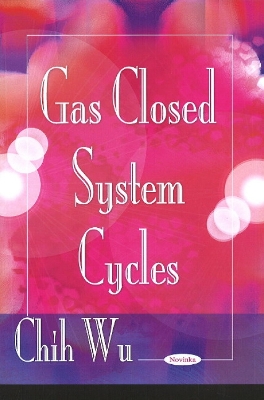Heat engines that use gases as the working fluid in a closed system model were discussed in this book. Otto cycle, Diesel, Miller, and Dual cycle are internal combustion engines. Stirling cycle is an external combustion engine. The Otto cycle is a spark-ignition reciprocating engine made of an isentropic compression process, a constant volume combustion process, an isentropic expansion process, and a constant volume cooling process. The thermal efficiency of the Otto cycle depends on its compression ratio. The compression ratio is defined as r=Vmax/Vmin. The Otto cycle efficiency is limited by the compression ratio because of the engine knock problem. The Diesel cycle is a compression-ignition reciprocating engine made of an isentropic compression process, a constant pressure combustion process, an isentropic expansion process, and a constant volume cooling process. The thermal efficiency of the Otto cycle depends on its compression ratio and cut-off ratio. The compression ratio is defined as r=Vmax/Vmin. The cut-off ratio is defined as rcutoff=Vcombustion off/Vmin. The Dual cycle involves two heat addition processes, one at constant volume and one at constant pressure. It behaves more like an actual cycle than either Otto or Diesel cycle. The Lenoir cycle was the first commercially successful internal combustion engine. The Stirling cycle and Wicks cycle are attempt to achieve the Carnot efficiency. The Miller cycle uses variable valve timing for compression ratio control to improve the performance of internal combustion engines.
- ISBN10 1607410583
- ISBN13 9781607410584
- Publish Date 7 January 2009
- Publish Status Unknown
- Publish Country US
- Imprint Nova Science Publishers Inc
- Format Paperback
- Pages 99
- Language English
